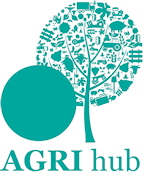 The European Group of Valuers Associations (TEGoVA) has launched new agreed Standards for property valuation, taking into account recent changes in markets and EU law.
The European Group of Valuers Associations (TEGoVA) has launched new agreed Standards for property valuation, taking into account recent changes in markets and EU law.
TEGoVA, representing 63 valuers bodies from 34 countries, unveiled the new European Valuation Standards (EVS) 2016 at its conference in Brussels on Friday (13th May). Recognised by the major EU institutions, the EVS affirms tested standards and offers guidance relating to changes in markets, technology and EU law that affect property in so many ways.
“Property valuation requires agreement on recognised standards and definitions,” said Jeremy Moody, vice chairman of the European Valuation Standards Board and secretary to the UK’s Central Association of Agricultural Valuers (CAAV). “These Standards bring professional discipline to the very practical task of providing sound and reliable valuations on which clients can rely. Those clients may be lenders, borrowers, investors, sellers, businesses, families, landowners or tenants looking for professional support.”
EU law has a great impact on property, from the regulation of mortgage lenders to environmental rules, whether imposed directly or via national laws. “This is compounded by the EU’s new powers of economic governance,” said Mr Moody. “EVS 2016 responds by giving a review of the key EU directives, regulations or policies bearing on property and so its valuation.”
The European Central Bank gives the EVS primacy over all other standards and the Mortgage Credit Directive recognises it as a reliable standard for mortgage lending decisions.
“TEGoVA’s pre-eminence stems not only from adapting to EU policy and law, but from foreseeing the need for common European approaches and guiding European policy makers,” said John Hockey, chairman of the European Valuation Standards Board. “Valuers need to be conscious of the EU origin of many of the local rules that shape their practice, but this unique document is also of great value to all academics, researchers, civil servants and advisers involved in the real estate aspects of EU policy.”
The five Standards set out and give commentary on the core subjects:
- – Market value, including market rent
- – Other bases of value
- – The qualified valuer, with a stress on independence, experience and ethics
- – The valuation process
- – The valuation report, with the benefits of commentary to aid the client’s understanding
There is also further guidance on many issues including codes of measurement, sustainability and property, valuation for lending and energy issues. With the experience of recent years, it tackles the issues of valuation uncertainty and market risk, and discusses longer term values.
Mr Hockey added: “With growing cross border property investment, this common approach to ensure reliable standards is increasingly important.”
For further information contact:
Jeremy Moody, CAAV on 01452 831815
TEGoVA Secretariat, on +32 2 503 32 34
+32 478 22 54 53
Notes for Editors
European Valuation Standards 2016 at:
http://www.tegova.org/en/p4912ae3909e49
The European Group of Valuers’ Associations (TEGoVA) is the European organisation of national valuers’ associations, covering 63 professional bodies from 34 countries with 70,000 valuers comprising specialist consultancies, major private sector companies and government departments both local and national. Its main objectives are the creation and spreading of harmonised standards for valuation practice, for education and qualification as well as for corporate governance and for ethics for valuers. It speaks with a common voice on valuation to European legislators and policy makers. www.tegova.org
European Central Bank Recognition (May 2014)
“Real estate should be valued in line with European Valuation Standards 2012 (Blue Book) and anther international standards … – where a conflict is seen EVS 2012 will apply for the avoidance of doubt …” (Asset Quality Review)
Mortgage Credit Directive (2014/17)
“In order to be considered reliable, valuation standards should take into account internationally recognised valuation standards, in particular those developed by … the European Group of Valuers Associations …” (Recital 26)



